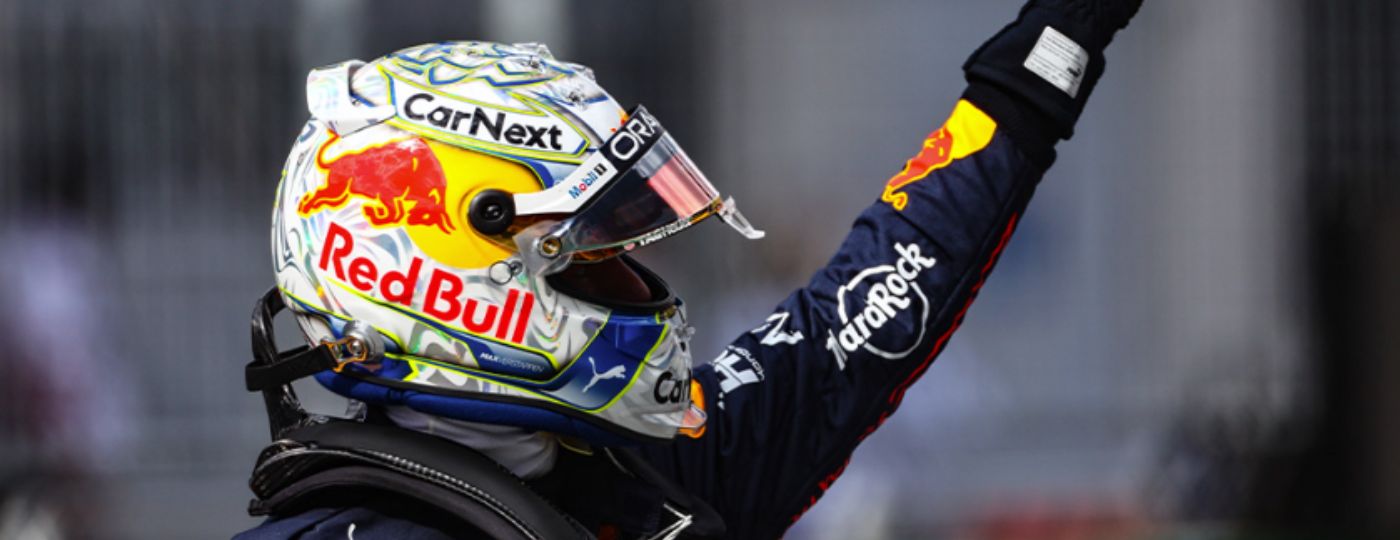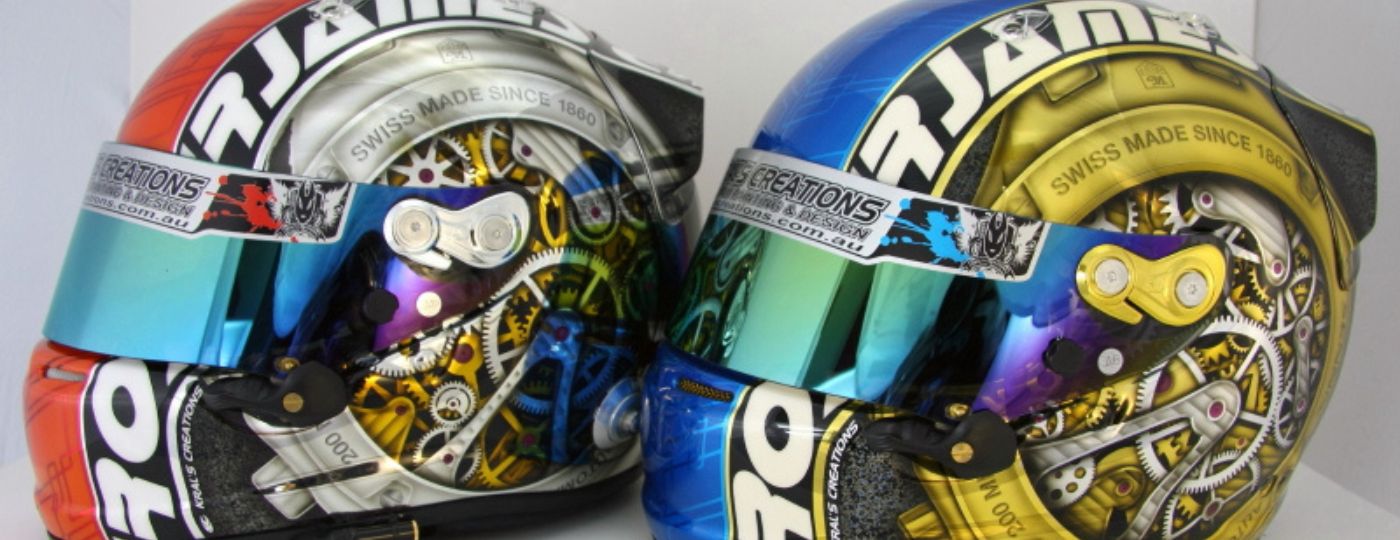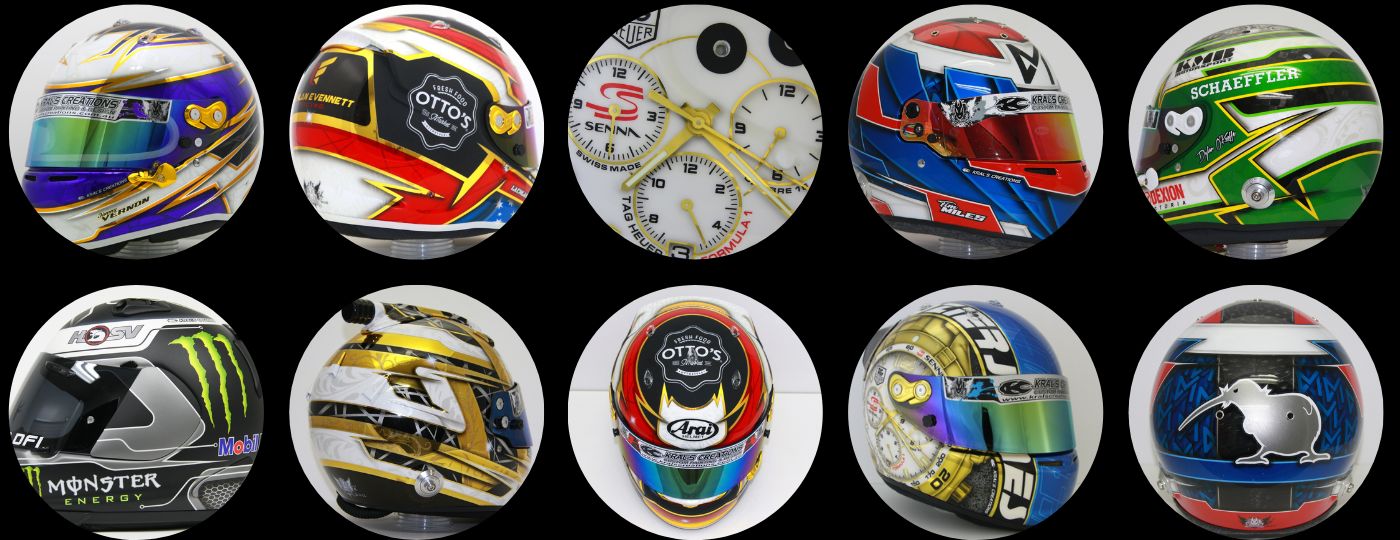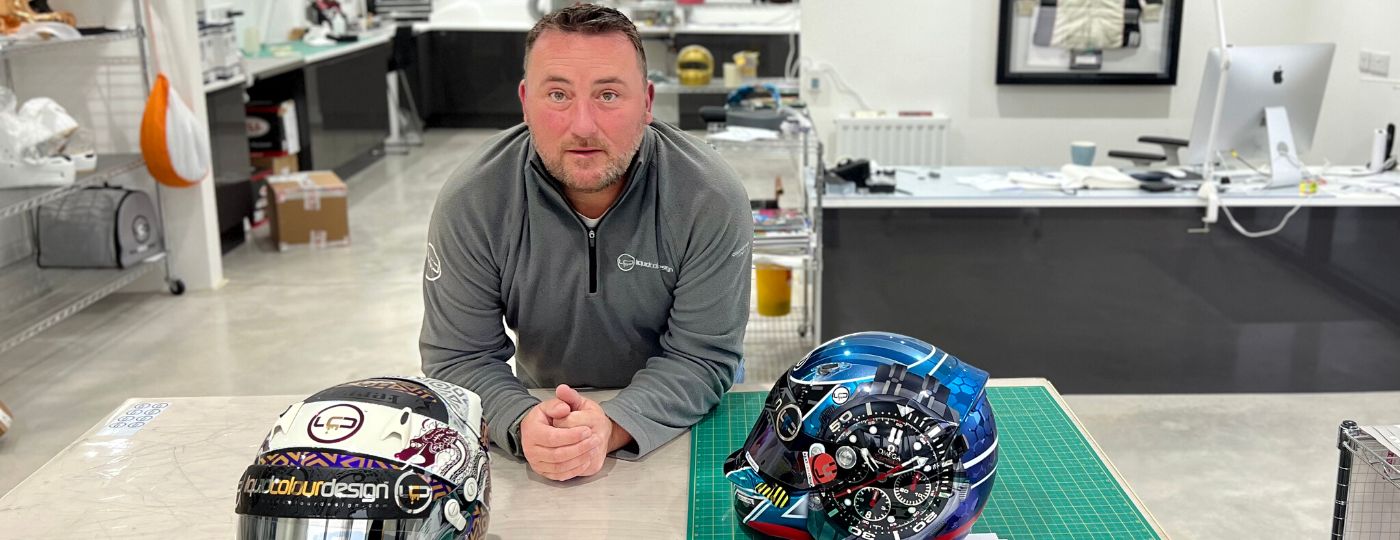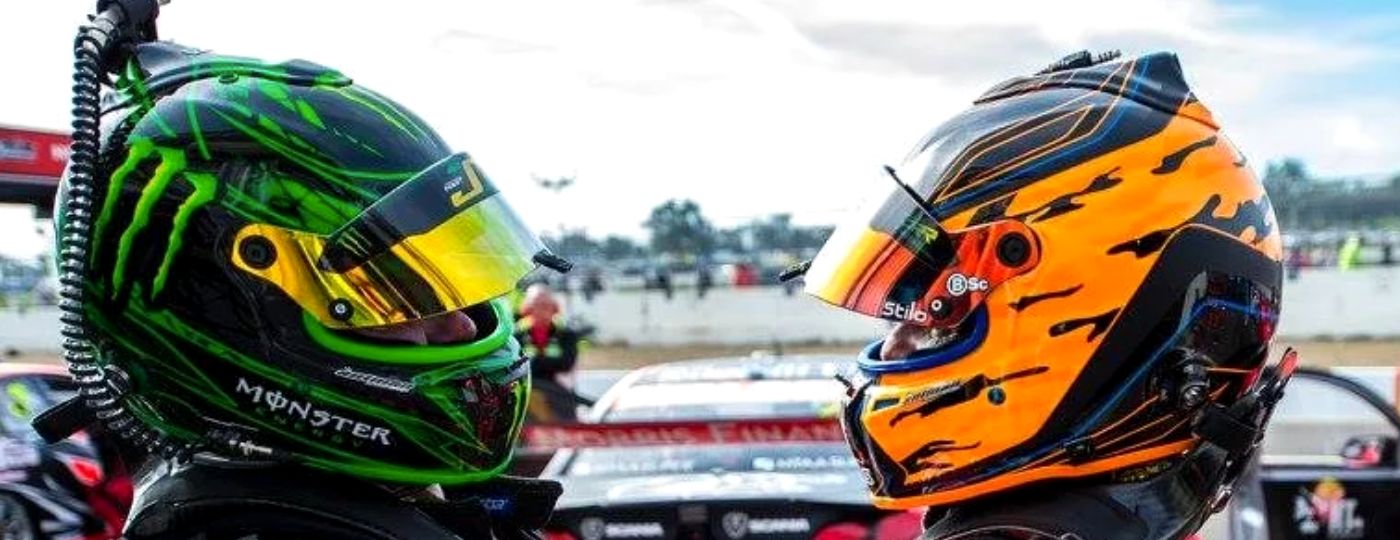Helmets – more than just head protection
Helmets play an essential role in motorsport as one of the important safety devices for racing drivers. In the early days of auto racing in the 1930s and 1940s, make-shift helmets fashioned from football or firefighting were used, but provided insufficient protection as the cars got faster and the racing more competitive.
In the 1950s Formula One made full-face hard-shell helmets compulsory and new technologies greatly improved the safety. Bell Sports were the pioneers, mass producing helmets in 1954 and safety standards were first created in 1959.
Since that time, helmets for racing car drivers and motorcycle riders have become more than a purely safety device – the personalisation of the graphics by the drivers have made them a real feature and point of interest for motorsports. While the team and sponsors control the car livery and race suit design, the ‘full face’ helmet has evolved to become a low weight, high strength personalised expression of the driver within.
The most memorable helmets from famous drivers now fetch eye-watering sums at auctions. In 2022, Max Verstappen’s helmet from the Austrian GP received a bid of 132,000 Euros, the cashed-up fan also got the chance to meet Verstappen at the Abi Dhabi GP.

